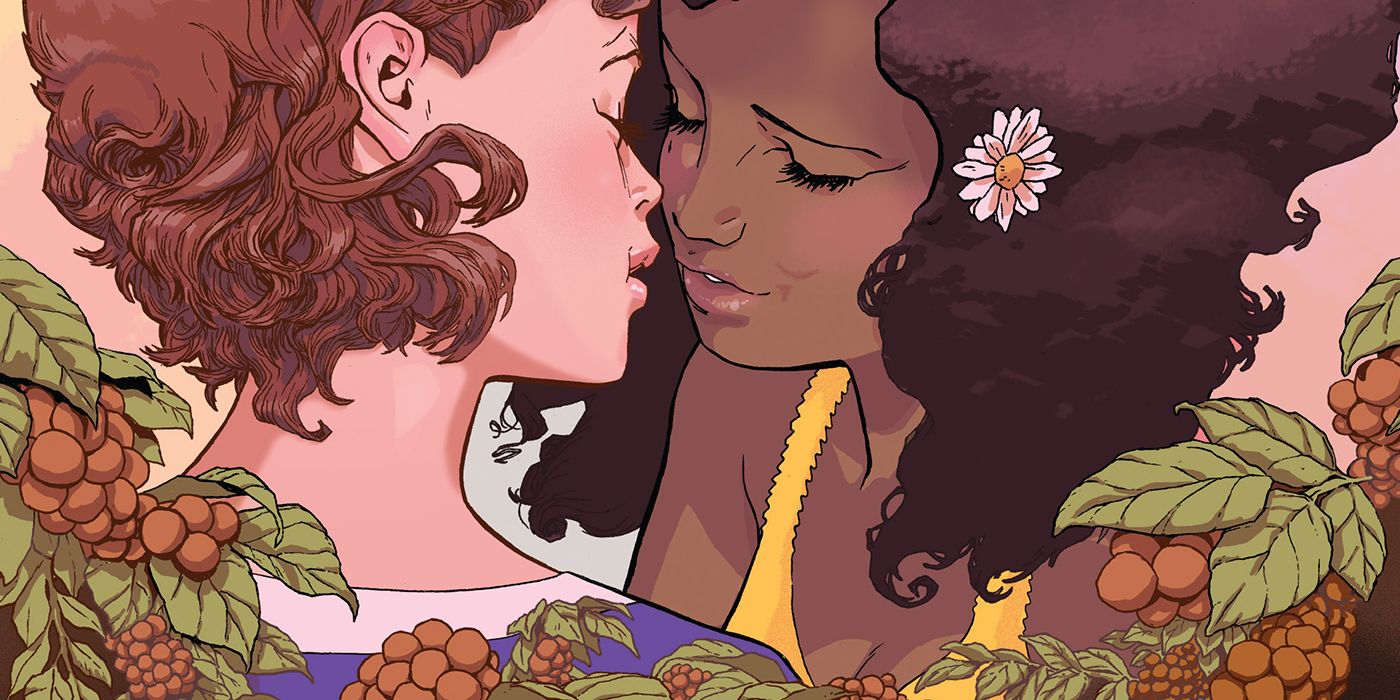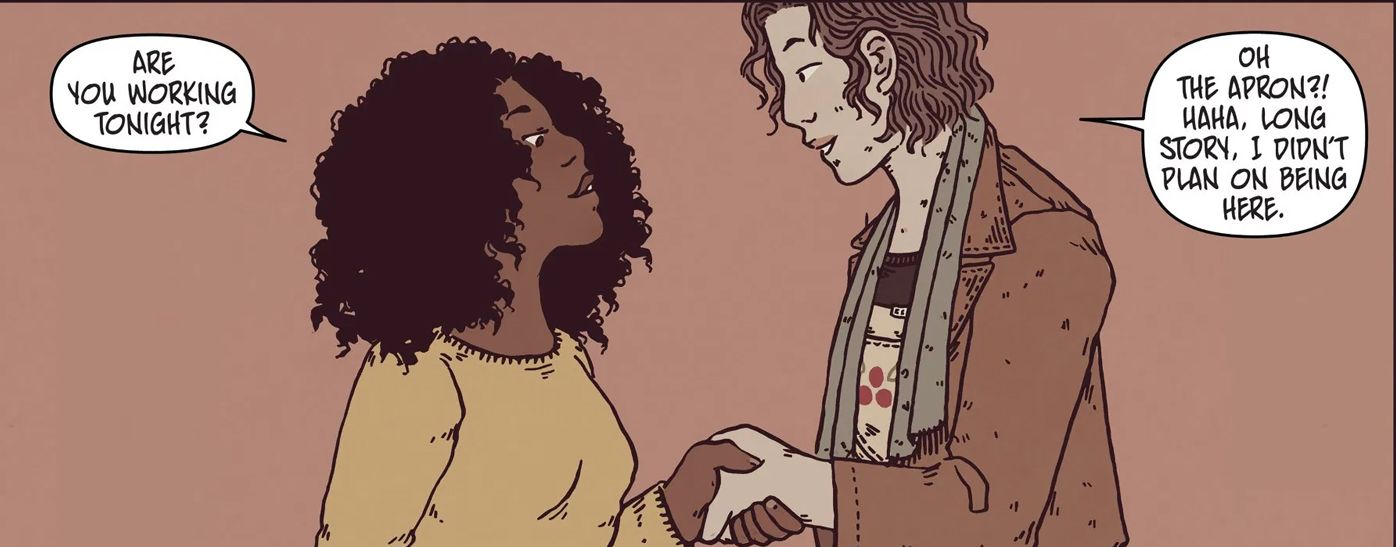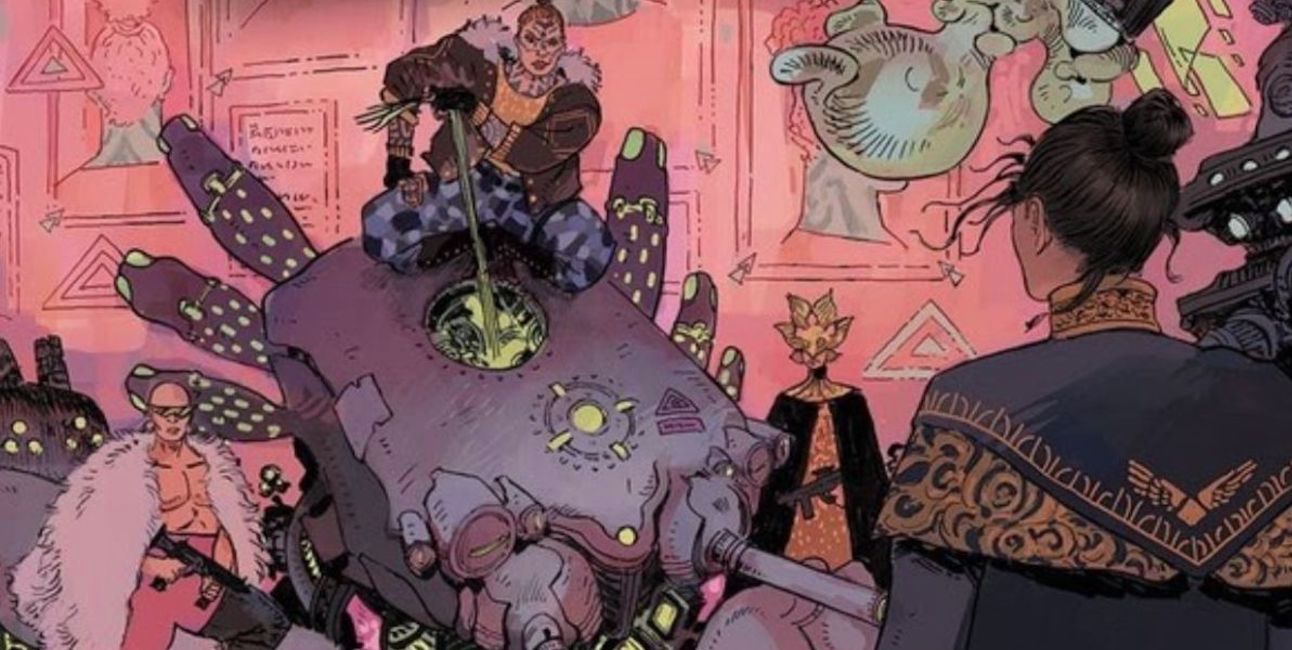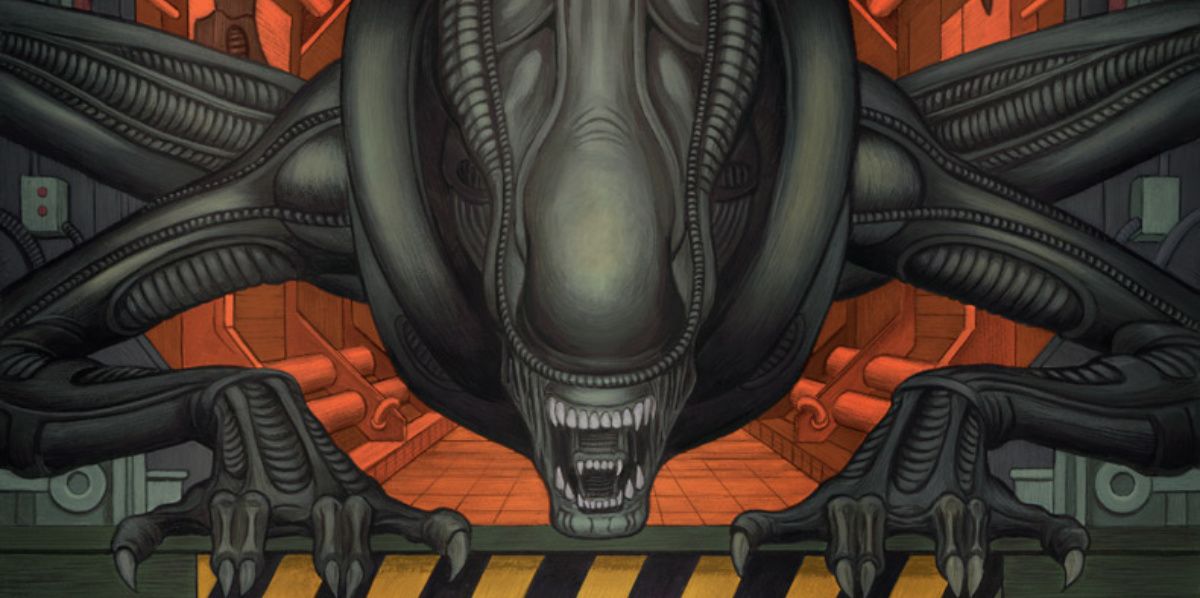Johnnie Christmas has steadily built an impressive catalog of creator-owned titles, co-creating the Image Comics series Sheltered with Ed Brisson before launching Angel Catbird at Dark Horse with The Handmaid's Tale author Margaret Atwood. While continuing to write and illustrate his own titles, including Firebug with Image, Christmas has begun to work more with other artists on a new wave of creator-owned titles this year, from the Image sci-fi series Tartarus, with Jack T. Cole, to the comiXology Original supernatural romance Crema, with Dante Luiz.
In an interview with CBR, Christmas shared his influences and inspirations, how he determines which creator-owned series to illustrate himself and which to trust to an artistic collaborator, and what made him interested in moving to licensed work to adapt William Gibson's fabled, unused script for Alien 3 into a comic miniseries for Dark Horse.
CBR: Crema has just come out on Comixology Originals. How did you develop this project with Dante?
Johnnie Christmas: We had an editor early on who had Dante on the radar, who put me in touch with Dante. And then the idea of maybe doing something that was based in Brazil would be really fun and fun to pitch to Comixology. I've always been fascinated with Brazil, I have been for a very long time, so I was trying to think of things that would be super-relatable to a North American comic book reader that maybe isn't as in love with Brazil as I am. You're thinking about music, you're thinking about food, you're thinking about all these wonderful things that come out of Brazil [including] art and coffee.
Coffee struck me, like "Oh yeah, that would work!" I came up with kind of a loose idea and sent it to Dante and Dante loved it, and I just kind of built it out bigger, sent it to Comixology and they liked it too. It was fun, and I'm glad we were able to do it because I didn't think that Brazil, coffee and ghosts would appeal to anybody but me and Dante. But I'm glad it did.
You're an accomplished artist yourself, having illustrated Firebug, Angel Catbird and Alien 3. When you're working on a project like Crema or Tartarus, with a different artist, what do you look for in an artist and what makes you want to step back and just be the scripter on a story like that?
I think a lot of times when the images come to me very easily -- when I can catch up to it -- it's something that I should draw. But, with Crema and with Tartarus, it was very much these ideas. The world felt more like a world of feeling, not a world of visuals, so I felt the world, but I didn't really see it as much. And, at that point, I think it's fun to reach out to other artists and see what it would look like in Dante Luiz's style; it's this very beautiful, romantic, warm style for a romance and I thought "Oh, this would be great!"
With Tartarus with Jack [T. Cole,] he has this wonderfully ornate style that I thought would be really cool for sci-fi that you don't really see very often in sci-fi. That's usually how I make that decision. It's very organic, not very deliberate. They kind of suggest themselves.
There's a lot of magical realism in your work, particularly in Firebug and Crema. What made you want to go full tilt sci-fi with Tartarus; full-on interplanetary war?
I think, at the time, I was in a very sci-fi place in my brain and, when I'm developing pitches, I don't want a bunch of the same type of thing. A) Because it's not a lot of fun to develop, like, five things that are all the same and B) If I'm pitching them to the same publisher, I don't want to just hand them all five of the same things. That's really and truly why. Plus, I'm just a big fan of sci-fi and always loved it but I always loved the sci-fi that has a bit of weirdness or heart like Dune or The Fifth Element; I guess more science fantasy than science fiction. I'm a big fan of science fiction, truly, but Tartarus, we have a touch of science fantasy but it's not very obvious. It's like dragons in Game of Thrones: It's this thing that's there but it's not going to save you day-to-day.
It adds texture to the story.
Yeah, it gives you a lot of room to stretch out. It's like having extra bedrooms: You're not going to use them all the time -- you're mostly going to be in the kitchen or your main bedroom -- but, every now then, it gives you another room you can go into as this whole other realm to explore.
In talking sci-fi, I have to ask: How was it adapting William Gibson's original Alien 3 script, not just realizing that unused vision, but reimagining it for the comic book medium?
It was fun! It was an honor, first of all, to be able to work on Bill's script, I was able to talk to him a little about what he had in mind for it. But it was also a great way to deconstruct a work by a sci-fi master -- I was working on Tartarus at the time -- so it was like a really cool homework assignment almost to spend months and months and months on Bill's script, breaking it down and figuring out how to tell these beats in a comic book medium. And to then, take the ideas that me and Jack are tossing around, and break those down and make those work in a comic book medium, it was great.
Had you been a fan of the Alien franchise? I know you're working off a script, but was there anything of your own that you wanted to lend to this iconic franchise?
I've always been a fan of the Alien franchise, it's probably my favorite of the sci-fi/horror genre, I'd say. And the face-hugger is the most terrifying movie monster ever. I don't do a lot of work-for-hire by design, I'm just not very interested in that sort of thing, but one of the things that I do love about the Alien franchise is that every iteration -- especially in films and recently in comics with James Stokoe's work and some others as well -- it allows the auteur to really put their voice on it.
A Ridley Scott Alien movie feels vastly different from James Cameron's Aliens which feels different from Fincher's Alien 3 and on and on and on. They all their own distinct feeling which I thought "Oh, cool, I won't have to come in and cookie-cutter it!" because I wouldn't really be interested in that sort of thing. But if I can come in and make it feel like my take on the visual Alien world, using Bill's script as an anchor, I thought it could be special. That's what made me really decide to try my hand at it.
In developing both projects, how much did Alien 3 inform Tartarus?
Well, we started Tartarus way back in, like, 2015. I was interested in legacy and how things are framed, how one person's warlord is another person's freedom fighter. I always thought quite a bit about that and all these historical figures who were rogues or had these crazy interesting lives, and I thought about the story of the kid of a warlord; that was kind of the seed of it. I was talking to Jack about this idea and how about we just take this make this sci-fi, because [the original idea] could've been based in 18th century France or something, it's more a story about family and the stories we tell ourselves and others -- but making sci-fi was super cool and seeing Jack's art, it all kind of came together.
So it was already percolating and Jack and I were already starting to put it together and I had started writing and then the Alien opportunity came along. And I was like "Cool, this is a way to get myself more fully into the sci-fi world!" It would also help that it was an established sci-fi work with more sci-fi bonafides, getting to work with the Alien franchise and getting to work with Bill. It was all these pluses. But Tartarus came first, and it took a w hile to get out into the world, obviously, five years later, but we're super proud that it's out.
With Crema done, what other projects are you currently working on?
I can't really go into it just yet... it's something that I've been working on for a couple years. The news will be dropping soon; it'll be in the next few weeks, I'm not sure when exactly but it's super exciting, I'm already working on that stuff. I'm excited, that's all I can say!
You've gotten to work alongside with Margaret Atwood on Angel Catbird at Dark Horse. I was wondering if you could get into your collaborative process with Margaret and how that project came about.
Margaret was looking for a collaborator on this thing, and my name got to her, and we got in touch and started collaborating. Mostly, she had her script and her ideas all down so my input was very much from visual storytelling like "How about this? How about that?" and she was super open and receptive to everything which was really cool. She wasn't like "I'm the boss and we're very doing it my way!" Every time I suggested something, it was listened to. Not that I wanted to insert myself too much in it because she had this idea pretty well in her brain, what it was going to be. So it was my job to facilitate but I thought it was really cool that I could make it my own as well.
It was great working with her, she's a great collaborator. Dark Horse was great, they gave us a lot of great marketing and resources and put the book out in front of a bunch of people which was the first time I had that experience in direct market comics, where all the stops were pulled out, so my hat's off to them for really going hard on it and instead of just letting it get out there and sink. [Laughs]
You're a New York Times best-seller now!
Because of that project! Not to knock the awards and everything, awards are always great, but New York Times best-seller was the thing that I always wanted, not so much like getting an award, which can be subjective. I love the objectivity of New York Times bestseller, like "This sold books." [Laughs]
What are other comic creators of color keep you inspired and whom would you recommend?
A lot of creators I'm interested in right now don't do a lot of long works but do really exciting stuff online, like Taurin Clark and Juni Ba, an amazing graphic novelist. There's so much good stuff out there but Trung Le Nguyen has a book coming out with Random House called The Magic Fish, just beautiful tarot linework kind of stuff. Others off the top of my head include Brian Stelfreeze, Chris Brunner, LeUyen Pham, Jillian Tamaki, Lorena Alvarez, Gene Luen Yang, Jaime Hernandez, Marguerite Abouet, Kazu Kibuishi; I know I'm forgetting tons!




